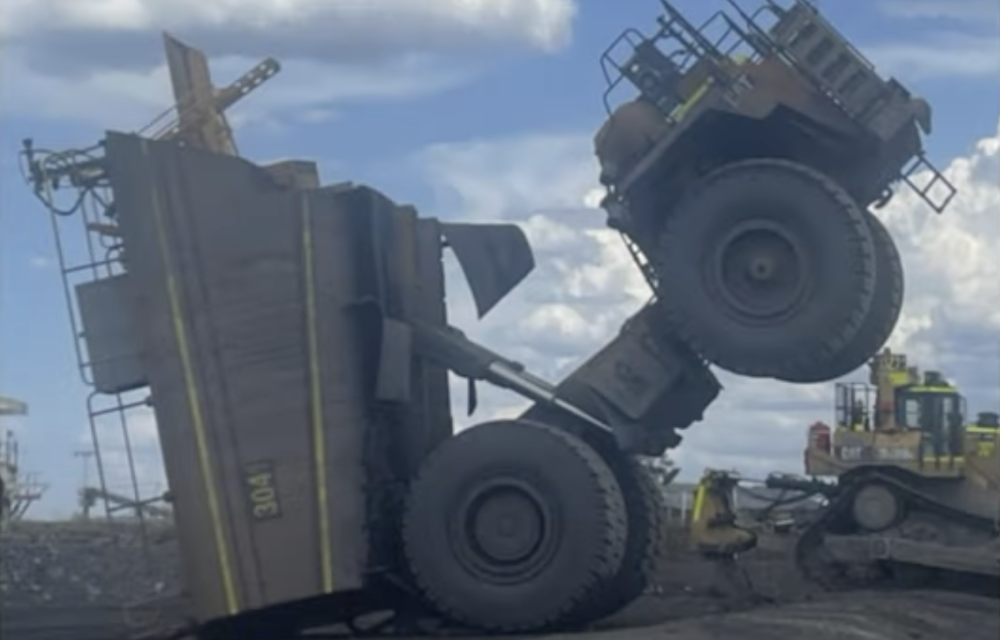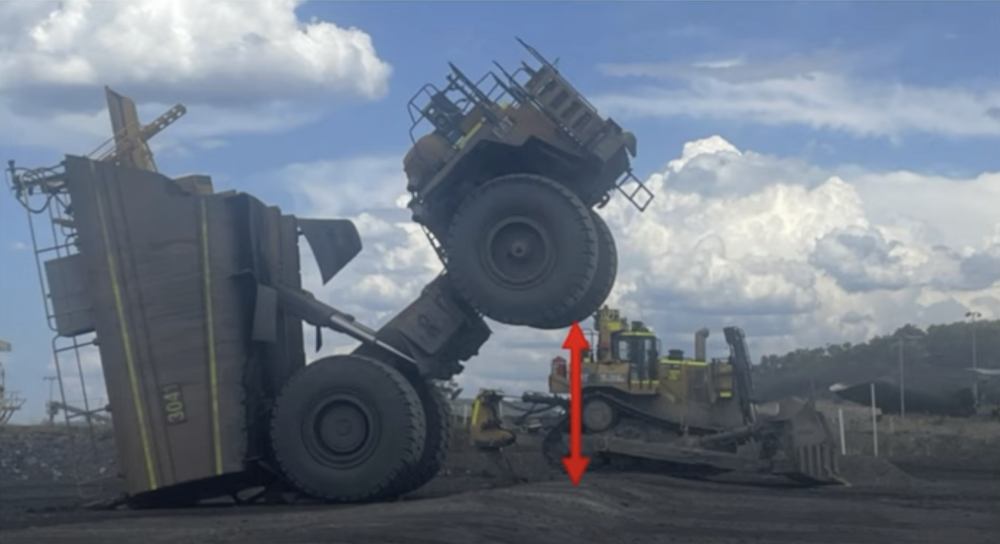When a water cart does a wheelie the Swiss cheese effect shows why mining needs sharper controls stronger change management and better verification


, , , , , , ,
, ,
,
It’s not every day a water cart performs a wheelie on a mine stand—but when it does, the lessons for mechanical engineering and site safety are hard to ignore.
At the NSW Resources Regulator’s 33rd Mechanical Engineering Safety Seminar in Sydney, Marvick Cuschieri, mechanical engineering manager at Peabody Energy Australia, recounted a February 2025 incident at Wilpinjong coal mine that forced his team to rethink how they manage engineering controls, change processes, and commissioning practices.
Marvick explained that a Cat 785C water cart, parked on a hardstand with a full tank, unexpectedly tilted backwards when the hoist raise function was inadvertently activated. “The front wheels slowly lifted until the rear of the water tank contacted the ground,” he said. “It’s the kind of photo you’d expect at Dakar, not on a mine site.”
A 90-minute rescue
The immediate priority was operator safety. It took 90 minutes to safely extract the operator from the cab, a process Marvick described as “dynamic, with a few unexpected challenges.” One of the biggest was teaching a dump truck operator—unfamiliar with working at heights—how to wear and use a harness in real time. Thanks to calm coordination between the operator and the emergency response team, the rescue was completed without injury.
Once the operator was clear, focus turned to recovery. The risks were significant: gravitational and potential energy, residual water in the tank, shifting loads, and the danger of unplanned movement. By draining the tank remotely, conducting a detailed lift study, and using both crane and dozer support, the team eventually lowered the truck safely back onto its wheels.

Swiss cheese and system failures
On the surface, the outcome was minor: some damage to rear sprays and a short disruption to operations. But the potential, Marvick warned, was far more serious. “If this had happened at a tip head, or with other vehicles nearby, it could have been catastrophic.”
The investigation revealed that the hoist raise lockout isolator—designed to prevent unintended activation—had been bypassed during a previous overhaul. Compounding the problem, the electronic disable function had been enabled, undocumented, and never checked during commissioning. “It was a textbook Swiss cheese scenario,” Marvick explained. “Small failures across a five-year period lined up to create the conditions for this incident.”
Among the contributing factors:
-
Service sheets that didn’t require checks of hoist disable functions.
-
Undocumented software changes with no formal change management.
-
Split responsibilities between two service providers during overhaul.
-
A missing information tag that should have warned of the bypass.
Lessons for the industry
Marvick emphasised that while the incident was unusual, the underlying causes were anything but. “It wasn’t the one-off event that created the risk—it was the everyday gaps in process and oversight,” he said.
Key lessons include:
-
Verify, don’t assume – Sites must test and confirm safety-critical systems after overhaul or commissioning, rather than relying solely on service providers.
-
Strengthen change management – Workers at all levels must understand when a change, even something as small as swapping a component, triggers a formal process.
-
Get the basics right – Risk assessments should involve the right people, include OEM input where needed, and be backed by updated service sheets aligned with safety system requirements.
-
Check competency and communication – From operators to supervisors, everyone must know how to use, test, and respect safety systems.
The bottom line
Marvick’s message to peers was blunt: “If we’re not verifying that our people are competent, that our safe work practices are current, and that our safety systems are operating as intended, can we really say we’re working in that safe productivity space?”
For mining professionals, the wheelie-ing water cart is more than an odd photo. It’s a reminder that safety doesn’t fail in dramatic moments—it fails in the small gaps we stop paying attention to.
